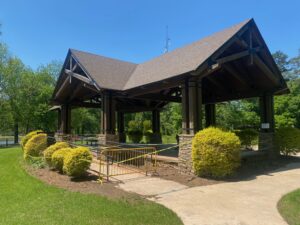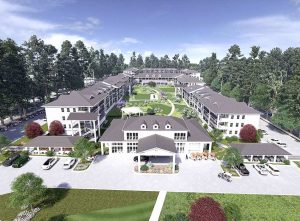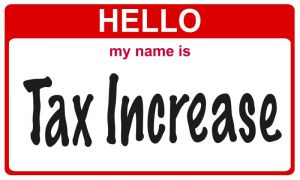REVISED for print edition — If you plan to cut any trees on your property during the next six months, the Peachtree City Council suggests you take a six-month break before you fire up that chainsaw. Thursday night, the council — at city staff’s urging — will consider adopting a six-month ban on nearly all private property tree removal.
The ban, called a moratorium, would allow staff time to “thoroughly evaluate our established regulations pertaining to issuance of tree removal permits and to develop recommendations to update these regulations,” according to a staff memo circulated to the City Council in advance of the meeting.
Even if the moratorium is enacted, there would still be several circumstances in which a tree could be removed, specifically:
• When existing vegetation sustains irreparable damage and constitutes an immediate hazard to human life or property as determined by a certified arborist licensed to practice in Georgia;
• When removal of existing vegetation is specifically approved by site plan review;
• When trees on commercial horticultural properties are to be removed as a direct part of the business; or
• When public service companies perform normal construction and maintenance.
Since 2004, the city has processed permits allowing the removal of more than 39,000 trees on private property. The city doesn’t have any corresponding data to account for the many residents who removed trees only to replant more trees, officials have said.
While the number of trees removed is a concern, there is also anecdotal evidence of new residents moving into neighborhoods and cutting down multiple trees to the dismay of their neighbors, according to Community Development Director David Rast.
“We have experienced areas where older residents are moving out, newer residents are moving in and they don’t want trees,” Rast told council at a recent meeting. “So the next thing you know we have a lot on the street that has been heavily wooded that’s totally devoid of any vegetation.”
The matter of tree removal has recently been the topic of discussion because the city lacks the manpower to issue and police tree removal permits under the city’s current ordinance. Staff recently asked that the tree removal regulations be loosened so a permit would only be required to remove a protected or specimen tree.
A protected tree is defined in city ordinance as a deciduous tree 15 inches or more in diameter, an evergreen canopy tree 18 inches or more in diameter or an understory tree four inches or more in diameter.
The ordinance defines a specimen tree as any tree reaching the “upper range for the mature diameter and height for that species of tree,” according to the ordinance.
=================================
Original online version:
A temporary ban on tree removal for up to six months, except for those which endanger persons or property, may be enacted soon by the Peachtree City Council. The ban, if approved, would give the city more time to craft an ordinance designed to conserve trees.
At a recent council meeting, it was noted that more and more residents are moving in and cutting down multiple trees to the dismay of their neighbors.
“We have experienced areas where older residents are moving out, newer residents are moving in and they don’t want trees,” explained Community Development Director David Rast. “So the next thing you know we have a lot on the street that has been heavily wooded that’s totally devoid of any vegetation.”
Also at the Jan. 6 council meeting, city staff suggested limiting a requirement for residents to get tree removal permits because it creates so much staff time and has been ineffective at reducing the amount of trees removed in the city.
The change would have required residents only to get a permit if they were to remove a protected or specimen tree. A protected tree is defined in city ordinance as a deciduous tree 15 inches or more in diameter, an evergreen canopy tree 18 inches or more in diameter or an understory tree four inches or more in diameter.
The ordinance defines a specimen tree as any tree reaching the “upper range for the mature diameter and height for that species of tree,” according to the ordinance.
At the same meeting, resident Inge Guha-Biswas urged council to do more to protect trees.
“You’ll never have a big tree if you keep cutting down the little ones,” she said. “It takes an awful long time for trees to grow.”
Council ultimately tabled the matter so staff could look into further restrictions that could be adopted. Among those possibilities was the enactment of a moratorium on tree removal.










Leave a Comment
You must be logged in to post a comment.